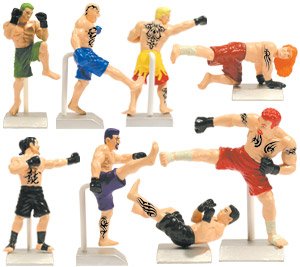In the annals of film history, few characters have left as indelible a mark on popular culture as Tyler Durden, portrayed by Brad Pitt in the 1999 cult classic “Fight Club.” Among the many elements that contributed to the character’s iconic status, one piece of clothing stands out: the tank top. This seemingly simple garment has transcended its utilitarian roots to become a symbol of rebellion, masculinity, and counterculture. In this article, we will explore the cultural significance of Tyler Durden’s tank top, examining its origins, its role in the film, and its lasting impact on fashion and society.
The Origins of the Tank Top

The tank top, known for its sleeveless design and casual fit, has a fascinating history. Originally popularized in the early 20th century, the garment was primarily worn by athletes and military personnel. Its versatility made it a staple in various contexts, from sports fields to leisurewear. However, it was not until the late 20th century that the tank top began to take on new meanings, particularly within the realms of fashion and subculture.
- 1920s: The tank top emerged as a standard athletic garment, often associated with swimming and military uniforms.
- 1950s: The tank top gained popularity in mainstream fashion, often worn by Hollywood stars like Marlon Brando.
- 1990s: The rise of grunge and alternative culture saw the tank top adopted by various youth subcultures, paving the way for its reimagining in “Fight Club.”
Tyler Durden: A Character Study

Tyler Durden is not just a character; he is a manifestation of the societal discontent that pervaded the late 1990s. Representing the anti-establishment ethos, Tyler embodies a rejection of consumerism and a yearning for authenticity. His choice of clothing, particularly his iconic red and black tank top, plays a significant role in communicating these themes.
The tank top serves multiple purposes in the film:
- Symbol of Rebellion: Tyler’s tank top represents a departure from traditional societal norms. It signifies a break from the constraints of formal attire and consumer culture.
- Emphasis on Physicality: The sleeveless design highlights the character’s physicality and masculinity, reinforcing his role as a leader in the anarchistic movement of Project Mayhem.
- Casual Confidence: The relaxed fit of the tank top embodies Tyler’s nonchalant attitude, contrasting sharply with the protagonist’s (the Narrator) more subdued wardrobe.
The Tank Top as a Cultural Artifact
Following the release of “Fight Club,” Tyler Durden’s tank top became a cultural artifact, influencing fashion trends and serving as a symbol of a generation’s discontent. The film’s exploration of masculinity, identity, and societal expectations resonated with audiences, leading to a resurgence of interest in the tank top as a fashion item.
Fashion Trends and Influence
The impact of Tyler’s tank top on fashion can be observed in several ways:
- Streetwear Revolution: The late 1990s and early 2000s saw the rise of streetwear culture, with the tank top becoming a staple in urban fashion. Brands like Supreme and Off-White adopted the casual yet rebellious aesthetic that Tyler exemplified.
- Celebrity Endorsement: High-profile celebrities, including Kanye West and Justin Bieber, have been spotted wearing tank tops, further solidifying its status as a contemporary fashion staple.
- Enduring Popularity: The tank top has remained a popular choice among both men and women, transcending gender norms and becoming a symbol of casual cool.
The Tank Top in Popular Culture

The cultural resonance of Tyler Durden’s tank top extends beyond fashion; it has also infiltrated various aspects of popular culture:
- Parody and Homage: The tank top has been parodied in numerous television shows and films, often as a shorthand for depicting a rebellious or countercultural character.
- Memes and Internet Culture: Tyler Durden’s image, often featuring his tank top, has been widely shared and memeified across social media platforms, illustrating the character’s enduring appeal.
- Influence on Fitness Culture: The tank top has become synonymous with gym culture, often worn by fitness enthusiasts as a means of showcasing physical fitness and masculinity.
Case Studies: The Tank Top in Action

Several case studies illustrate the tank top’s impact on fashion and culture:
Case Study 1: Street Style Influencers

In recent years, street style influencers have embraced the tank top, styling it in various ways to create modern, edgy looks. Influencers on platforms like Instagram and TikTok often incorporate tank tops into their outfits, showcasing the garment’s versatility and appeal. For instance:
- Layering: Many influencers layer tank tops over long-sleeve shirts or under oversized jackets, creating a contemporary twist on Tyler’s original look.
- Graphic Prints: Custom tank tops featuring bold graphics or slogans are often seen in streetwear collections, echoing the rebellious spirit of “Fight Club.”
Case Study 2: The Gym Culture Phenomenon

The tank top has become a staple in gym culture, often worn by athletes and fitness enthusiasts. This trend can be attributed to:
- Comfort and Mobility: The sleeveless design allows for a greater range of motion during workouts, making it a practical choice for exercise.
- Body Positivity: The tank top serves as a canvas for self-expression, with many individuals using it to showcase their fitness journey and body positivity.
The Psychology Behind the Tank Top
The tank top’s appeal is not merely superficial; it taps into deeper psychological themes related to identity and self-expression. The act of wearing a tank top can evoke feelings of confidence, rebellion, and empowerment. In many ways, it serves as a visual representation of one’s values and beliefs, particularly for those who resonate with Tyler Durden’s anti-consumerist ideology.
Research has shown that clothing can significantly influence self-perception and behavior. According to a study published in the journal “Social Psychological and Personality Science,” the clothes we wear can affect our cognitive processes and the way we interact with the world. This phenomenon, often referred to as “enclothed cognition,” suggests that wearing a tank top may lead individuals to embody the traits associated with Tyler Durden, such as confidence and nonconformity.
Tyler Durden’s tank top is more than just a piece of clothing; it is a cultural symbol that encapsulates the spirit of rebellion, masculinity, and self-expression. From its origins as a basic athletic garment to its status as a fashion statement and cultural artifact, the tank top has undergone a significant transformation, influenced by societal shifts and cultural movements.
As we reflect on the impact of Tyler Durden’s tank top, it is clear that clothing has the power to convey messages, challenge norms, and shape identities. The tank top serves as a reminder of the importance of authenticity in a world increasingly dominated by consumerism. Whether worn at the gym, on the streets, or as a statement of individuality, the tank top continues to resonate with audiences, bridging the gap between screen and reality.
In conclusion, the journey of the tank top—from screen to street—highlights the complex interplay between fashion, identity, and culture, solidifying its place as a significant symbol of our times.




